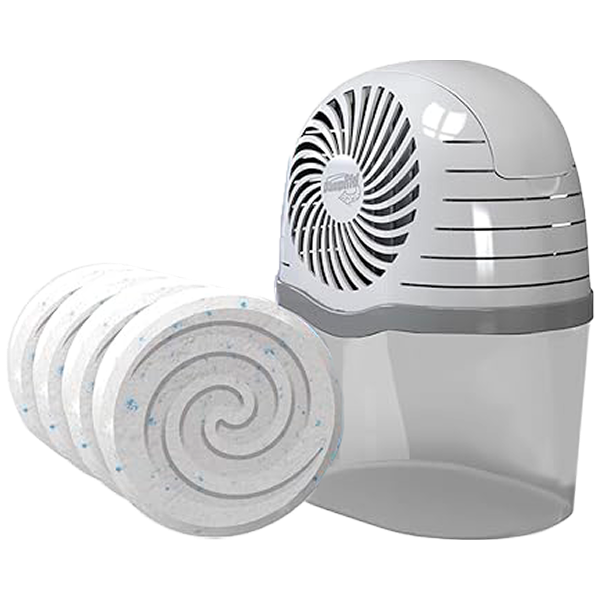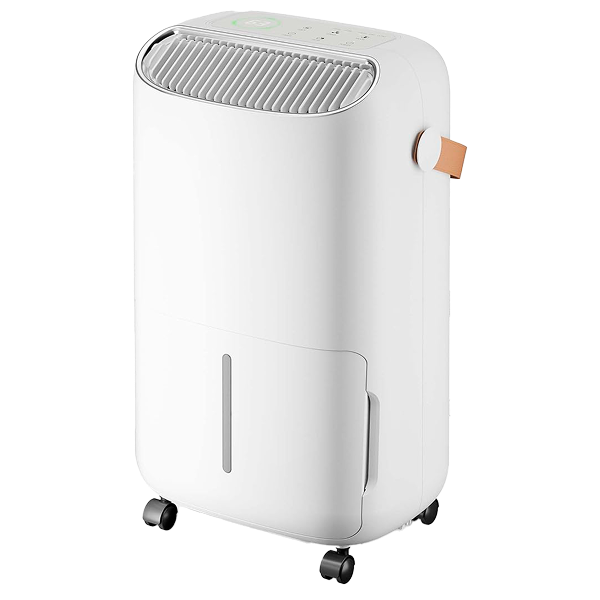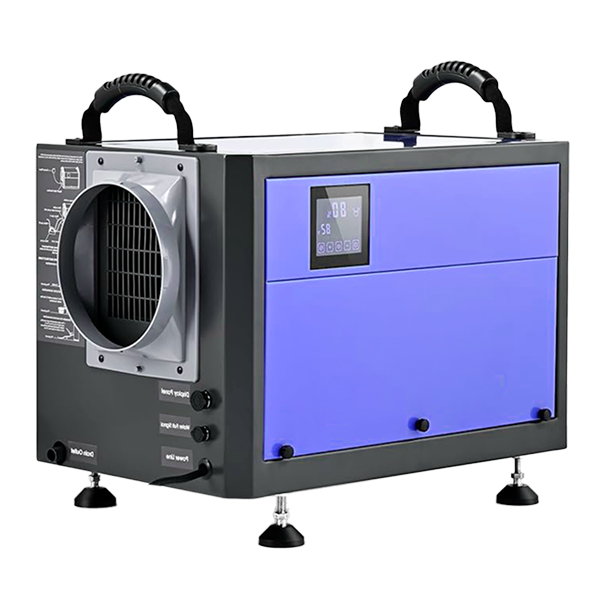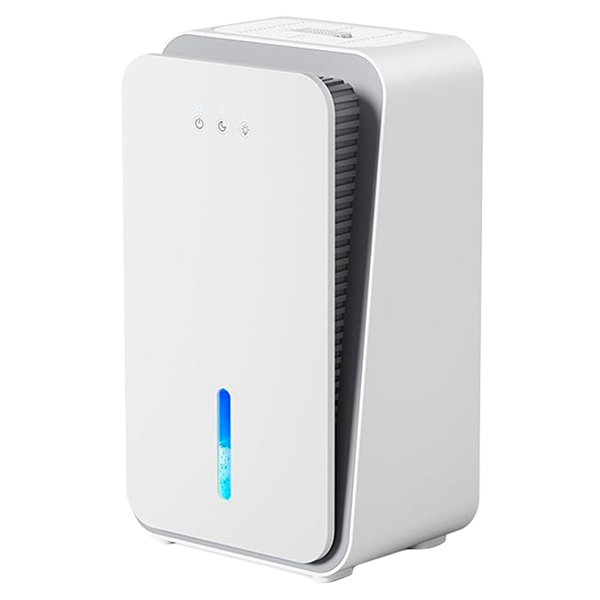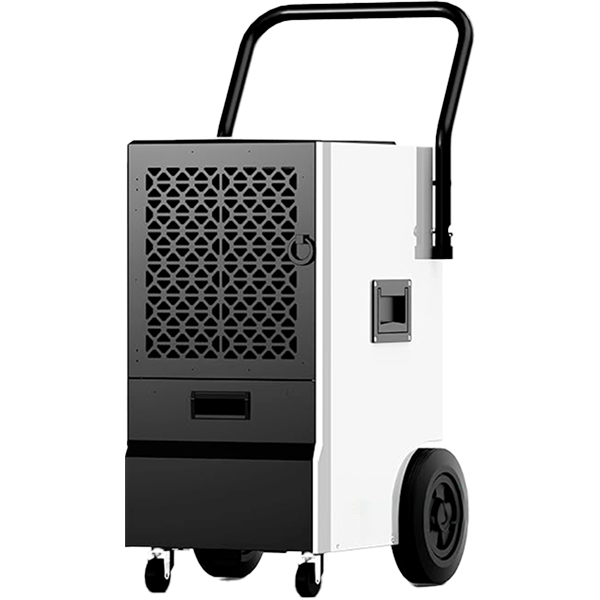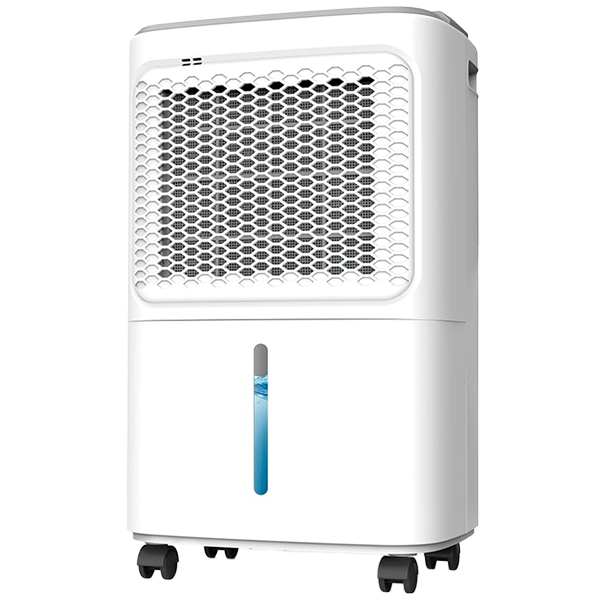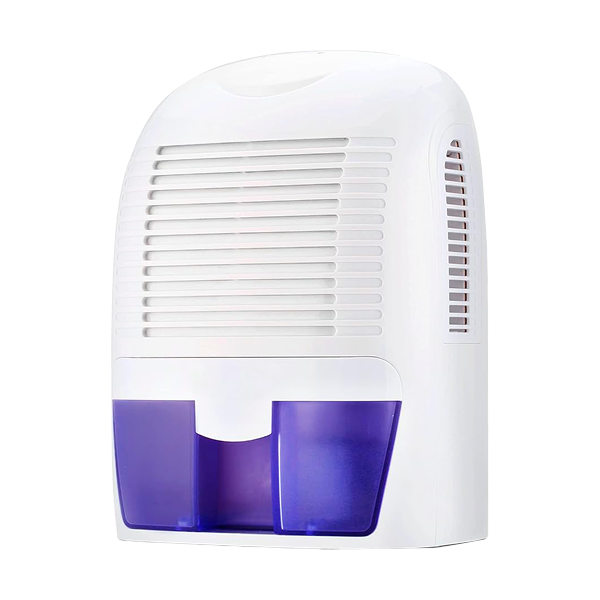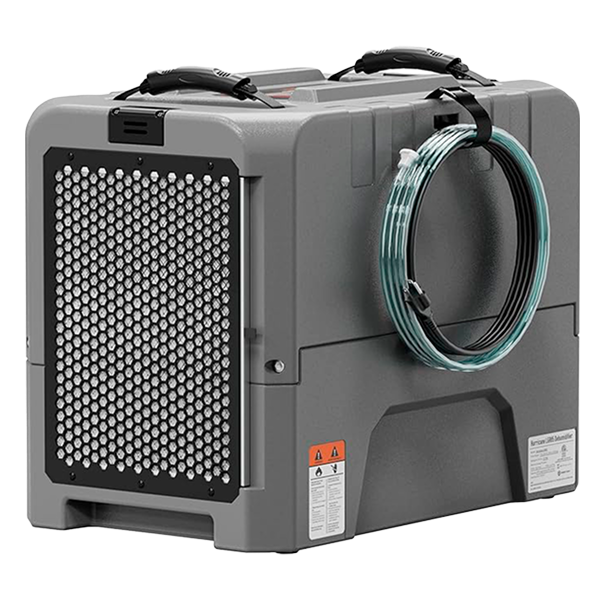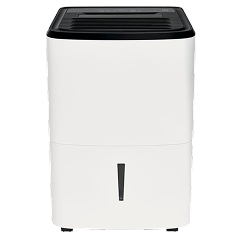Desiccant dehumidifiers work by drawing in air and passing it through a porous desiccant material, typically silica gel, stored in a rotating wheel. The desiccant absorbs the water, and a heated portion of the wheel releases the absorbed moisture, which is then vented out into the room. These units are ideal for cold conditions and low humidity levels because their process doesn’t rely on cooling, and they can operate effectively in temperatures below 0°C.
Desiccant dehumidifiers are especially useful in basements, garages, workshops and storage rooms, as they never get affected by frost. In this guide, we’ll explain what to look for when buying, review popular manufacturers, and help you choose a unit best suited for your space and needs.
For a broader overview of dehumidifier types, common household scenarios, and leading brands, see our general guide.
Moisture Extraction (L/24 h)
This shows how much moisture a dehumidifier can remove from the air over 24 hours. Smaller machines usually manage around 10–12L per day, while bigger ones can remove 20L or more. The right choice depends on both your room size and how severe the damp problem is.
- <10L/day – Typical for compact models, best suited to smaller areas like studies, nurseries, or storage rooms, and for dealing with light condensation or mild damp.
- 10–20L/day – A common range for desiccant dehumidifiers. Ideal for bedrooms, living rooms, and average-sized flats where humidity is clearly noticeable.
- 20L+/day – Designed for large or heavily affected spaces. Perfect for tackling serious damp, drying laundry indoors, or dealing with leaks. Suited to bigger homes, offices, and open-plan layouts.
For homes with persistent humidity issues, a higher-capacity unit will usually deliver quicker, more effective results.
Tank Capacity
The moisture collected from the air is collected in a built-in water tank. The bigger the tank, the less often you’ll need to empty it, but it does add to the unit’s overall size.
- <2L – Needs emptying every day. Best for small bedrooms, nurseries or occasional use, such as during wet-weather periods.
- 2–4L – A practical middle ground for most households, giving decent capacity without making the unit too bulky.
- >4L – Ideal for continuous use in damp homes and for households that don’t want the hassle of frequent emptying.
If you want to leave your dehumidifier unattended, opt for a model with a continuous drainage hose.
Coverage Area (m²)
Make sure the dehumidifier you choose has the capacity to handle the size of your room. Open-plan layouts or spaces with lots of corners, high ceilings and oddly shaped rooms may need a stronger unit to work effectively.
- <20 m² – Suited to smaller areas such as bedrooms, bathrooms, or studies.
- 20–40 m² – A good fit for standard bedrooms, kitchens, or average-sized living rooms.
- 40 m²+ – Designed for bigger areas like large lounges, basements, or open-plan spaces.
Humidistat Control
A must-have feature, humidistat control lets you set a target humidity percentage, and once it’s reached, the unit will automatically turn off to save energy. It will only restart when the humidity rises above the set level again.
- Manual Dial – Basic and not very common anymore, although still used on some budget-friendly models.
- Digital Display – More precise, often shows current humidity and allows for one-touch adjustments.
Noise Level & Noise Preference (dB)
Desiccant dehumidifiers are generally quieter than compressor units because they operate without a compressor. However, just like with any other electrical appliance, they aren’t silent. The noise level can depend on the fan speed, model, and other features. If you’re planning to use your dehumidifier in a basement or garage, noise might not be a concern either.
- <40 dB – Super Quiet: Barely noticeable, ideal for bedrooms or home-office spaces.
- 40–50 dB – Quiet: Loud as a gentle rainfall, ideal for living spaces.
- >50 dB – Moderate/Noisy: Noticeable hum, best for basements, garages, storage rooms and unattended use.
Look for sleep/night mode if you intend to use your dehumidifier in the bedroom.
Energy Efficiency Ratio (EER)
EER (Energy Efficiency Ratio) measures how efficiently a dehumidifier converts electricity into moisture removal. A higher rating means less energy used and lower running costs. It’s a key factor to consider when comparing models, especially if you’re on a budget.
- <1.5 – Less efficient. Likely higher running costs.
- 1.5–2 – Average efficiency, suitable for most households.
- >2 – Highly efficient. Better long-term savings on bills.
Continuous Drainage Option
A continuous drainage hose is especially useful if you’re planning to use your dehumidifier in cold rooms such as basements, attics, storage rooms and house extensions that don’t get heated regularly in winter. It allows the dehumidifier to run non-stop, with water flowing into a drain or a large collection tank.
Auto shut off
The auto shut-off feature in desiccant units is important because it prevents overheating, saves energy and extends the dehumidifier’s lifespan. It works by turning off the machine once your pre-set humidity level is reached, and it usually also turns off the unit when the water tank fills up to prevent spills. It allows the dehumidifier to operate more efficiently and without constant checking.
Filter access/ease of cleaning
Whether your unit has a mesh or antibacterial filter to further deodorise the air, it’s useful to consider how easy it is to access, clean and replace the filter. It might become tricky and annoying to replace a filter on a dehumidifier that’s been tucked in the corner of a crowded shed, or in a less accessible location like the attic or basement.
Filters can become costly over time, as they need frequent replacement. Always double-check the type and price of filters before purchasing.
Aesthetics (Design, Colour & Size)
There’s a model for every space, whether integrated or portable. Modern dehumidifiers come in neutral tones, such as white, grey, or soft pastels, with shapes, LED lights, and details that blend seamlessly into living spaces. Some feature smooth edges, glass tanks, glossy finishes, or minimalist designs. Choose a model that complements your style, from Scandi minimalism to playful colours.
Timer
A timer feature is important in any dehumidifier, but especially in desiccant units. It lets you control the unit’s schedule, helping save energy and meet specific humidity targets. If you’re using your dehumidifier in a less-frequented area, a timer saves the hassle of manually turning it on and off.
Portability Features
Whether you’re planning to move the dehumidifier between rooms or carry it up stairs, it’s always useful to look for enhanced portability features. Look for 360° wheels, carry handles and lightweight components. Small details, such as a cable tidy, might also come in handy.
Filter Type
Desiccant dehumidifiers also use filters to clean the air as it passes through the unit. The type of filter affects both upkeep and the quality of air.
- Washable Mesh Filter – The most common option. Easy to remove, rinse, and reuse, it prevents dust and larger particles from clogging the machine.
- HEPA Filter – Available in some models. Traps fine particles and allergens, making it a good choice for allergy or asthma sufferers.
- Activated Carbon Filter – Helps absorb odours and some gases, ideal for musty rooms or spaces with lingering smells.
If you want fresher, cleaner air as well as lower humidity, choose a desiccant model with HEPA or carbon filtration.
Certifications
Look for independent certifications to ensure the unit meets safety, performance, and environmental standards:
- CE / UKCA Marking – Confirms the unit meets UK and EU safety regulations.
- Energy Star (where applicable) – Identifies models that meet strict efficiency criteria, helping lower running costs.
- RoHS Compliance – Ensures the product avoids hazardous materials in its components.
Smart/App Connectivity & App Features
Wi-Fi-enabled models allow remote control via smartphone apps. Some models also support voice control, letting you use Alexa or other smart assistants to set the dehumidifier hands-free.
Modes & Functions
While the main goal of a dehumidifier is to suck moisture from the air and make your room less humid, many come with advanced modes for use-specific cases. If your desiccant dehumidifier comes with a HEPA or carbon filter, it might also have an air purifying mode.
Common functions often include:
Traffic Light Humidity Sensors
Some dehumidifiers include a traffic light humidity indicator – a quick visual guide that shows room conditions at a glance. The lights typically switch between green, amber, and red to signal whether the humidity is within the ideal range, high, or excessively high.
- Green = Ideal humidity (usually between 40–60%)
- Amber = Moderate humidity (may feel stuffy or damp)
- Red = High humidity (risk of mould, condensation, or musty smells)
Leading Manufacturers Overview
EcoAir
Best for: Cold rooms | Garages | Laundry drying
EcoAir is the UK’s best-known specialist for desiccant units, led by the DD1 Classic series. Their models keep extracting efficiently in chilly spaces and add a gentle warmth – ideal for winter use, sheds, boats, and unheated rooms.
- Proven desiccant line (e.g., DD1 Classic Mk5) with ECO E7 energy-saving logic
- Laundry mode, 3D louvre, ioniser, and nano-silver filter options
- Safety touches: tilt protection, full-tank shut-off, auto-restart
Cons: Higher wattage than compressors; premium vs budget brands.
ElectriQ
Best for: Smart features | Flexibility in cold rooms
ElectriQ sells a mix of compressor and desiccant dehumidifiers, including 10L smart
desiccant units that combine moisture removal with gentle heating. They’re a solid mid-range choice.
- Smart controls with app support on some models
- Strong year-round performance in cooler homes
- Options with an integrated heater for drying laundry
Cons: Slightly higher running costs; fewer models than EcoAir or Meaco.
Igenix
Best for: Compact design | User-friendly setup
Igenix offers both compressor and desiccant models (e.g., IG9807), positioned as practical, no-fuss appliances for homes and offices. They’re popular for being straightforward and reliable rather than feature-heavy.
- Simple plug-and-go operation
- Compact footprint, good for flats or small homes
- Reasonably priced with trusted UK brand support
Cons: More basic than rivals; limited choice in larger desiccant capacities.


